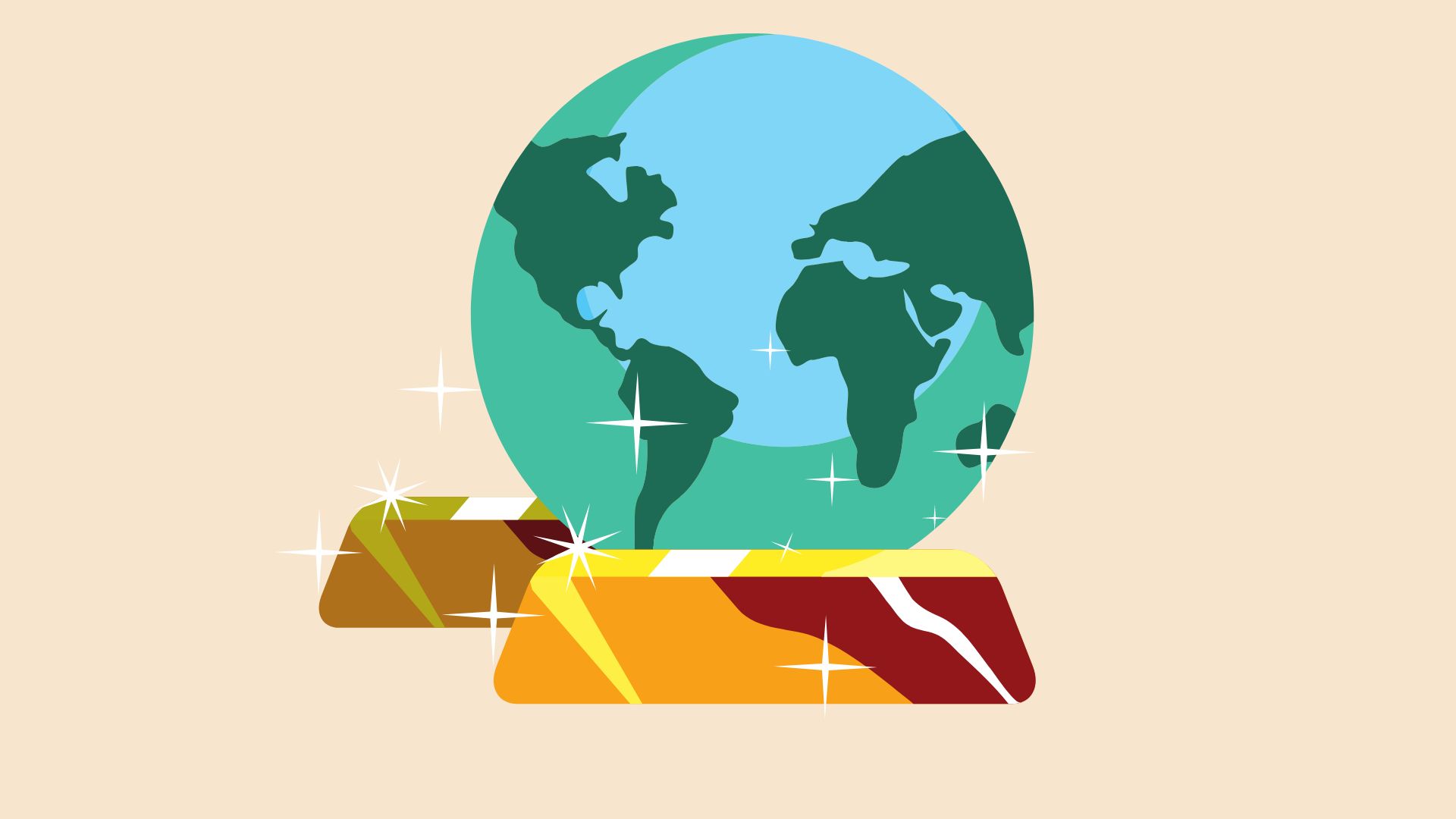

Gold played a central role in the international monetary system in past centuries when currency rates were linked to the price of gold. The fixed currency system ended in 1973, diminishing gold’s role. However, gold remains an important reserve asset and the IMF is one of the world’s largest official holders of gold.
The IMF holds around 90.5 million ounces (or 2,814.1 metric tons) of gold at designated depositories.
Until the early 1970s, the IMF acquired its gold holdings through four main channels:
1. At the IMF’s founding in 1944, member countries paid 25 percent of their initial quotas in gold. They did the same with quota increases over the next three decades. These payments represent the largest source of the IMF's gold.
2. Members normally paid all interest owed on IMF credit in gold.
3. Members also could use gold to repay credit extended by the IMF.
4. Members seeking to acquire another member’s currency could do so by selling gold to the IMF, as South Africa did in 1970–71.
Once countries stopped linking currencies to gold, the IMF approved changes to reflect the new reality. Under the Second Amendment to the Articles of Agreement, passed in April 1978, the IMF has no authority to buy gold or engage in gold transactions such as loans, leases, swaps, or use gold as collateral. The IMF may sell gold outright according to prevailing market prices and may accept gold from member countries repaying loans, using an agreed price based on current market prices. Such transactions require IMF Executive Board approval by an 85% majority of the total voting power.
At times, the IMF has returned gold to member countries or sold some of its holdings. The reasons for this have varied:
Between 1957–71, the IMF sold gold on several occasions to replenish its holdings of currencies. During 1956‒60, some IMF gold was sold to the United States and invested in US Government securities to offset operational deficits.
In 1999, the IMF Executive Board authorized off-market gold sales to help finance the IMF’s participation in the Heavily Indebted Poor Countries (HIPC) Initiative. Ultimately, the IMF sold 12.94 million ounces of gold in transactions with Brazil and Mexico.
In 2009, the IMF Executive Board approved the sale of 12.97 million ounces of gold —one-eighth of the IMF’s total holdings of gold at that time. The sale was part of a new income model to put the IMF’s finances on a secure long-term footing and increase low- or no-interest lending to low-income countries through the Poverty Reduction and Growth Trust (PRGT).
The sale began in October 2009 with off-market transactions with central banks and other official holders at market prices. In February 2010, the IMF announced it would conduct market sales over several months to avoid market disruptions. The IMF concluded its sales in December 2010.
The IMF’s profits over the book value of the gold amounted to SDR 6.85 billion, more than it had projected when it endorsed the sales. With these windfall profits, the IMF Executive Board approved in February 2012 a first distribution of SDR 700 million to members, which became effective in October 2012.
The distribution was subject to assurances that at least 90 percent of the amount would flow to the PRGT. As of end-August 2022, nearly 90 percent of the distribution had been transferred to the PRGT.
The Executive Board approved in September 2012 the second distribution of SDR 1,750 million of reserves from windfall gold sales profits, which became effective in October 2013. As of mid-August 2022, 90 percent of the amounts distributed had been provided to the PRGT. The distributions of gold windfall profits were a key factor in increasing loans to the poorest countries through the PRGT.
This page was last updated in September 2022